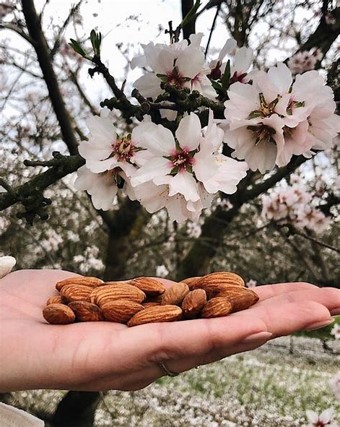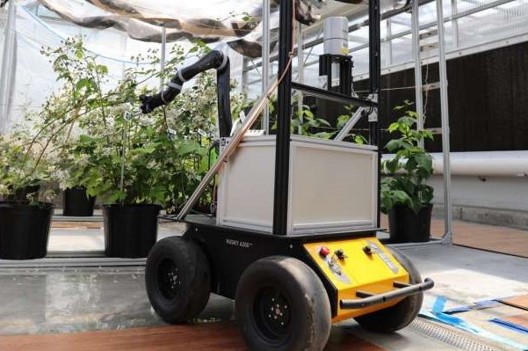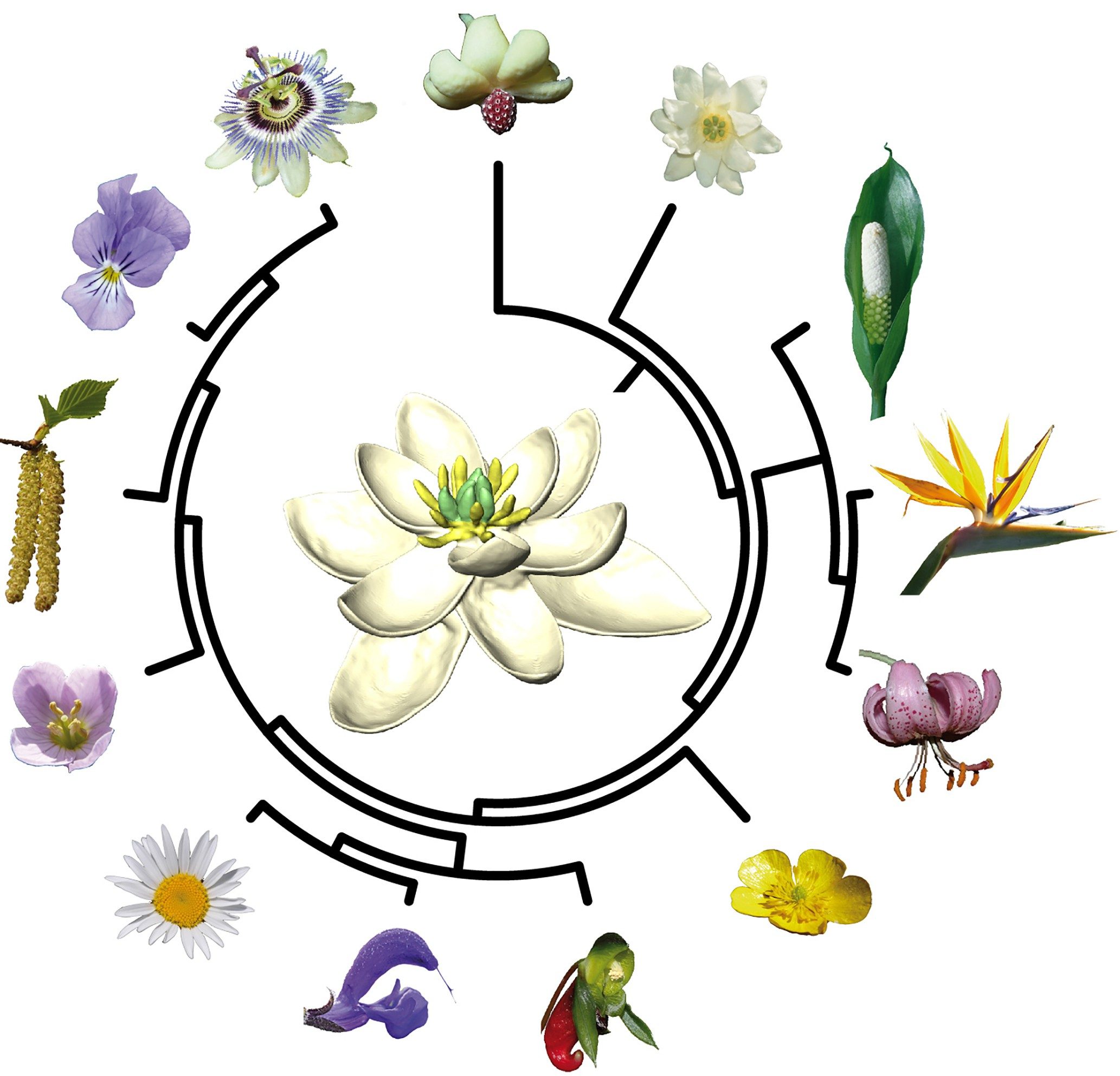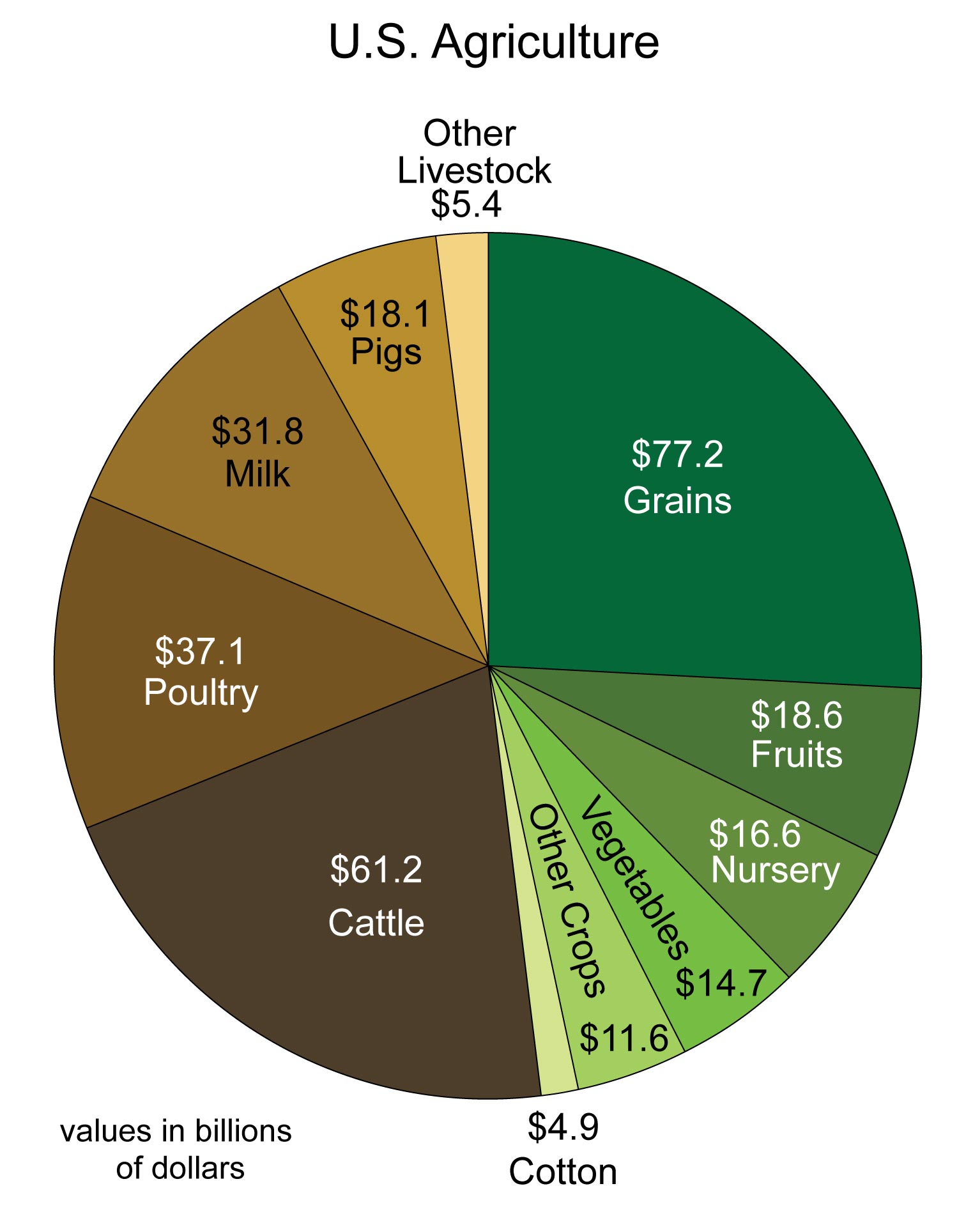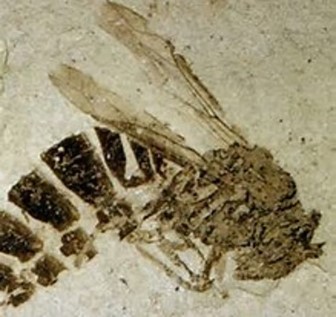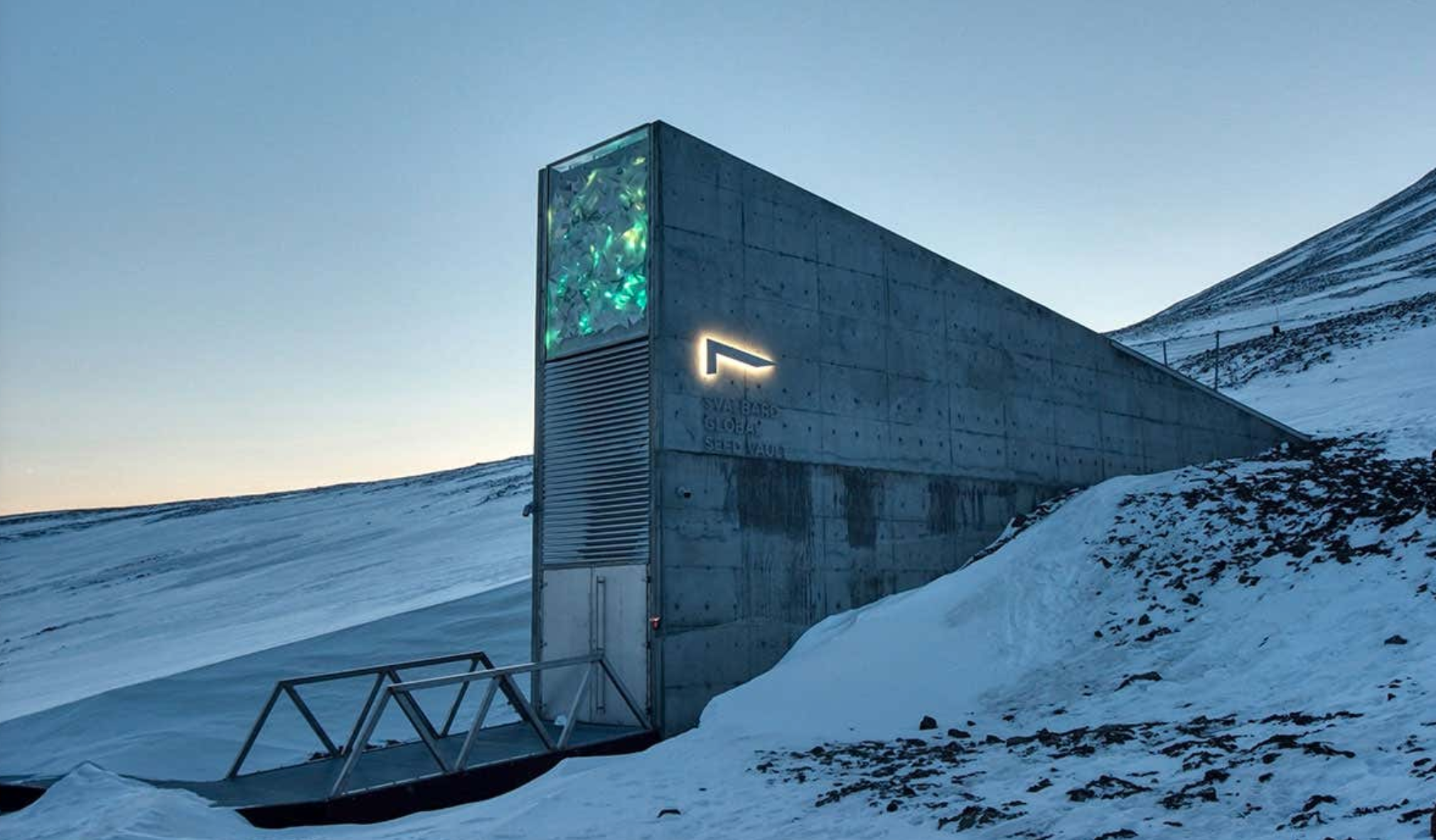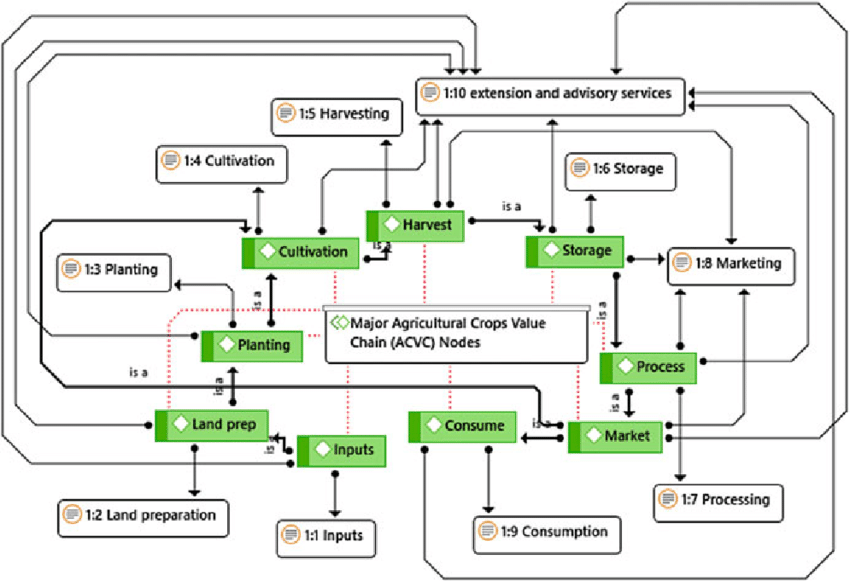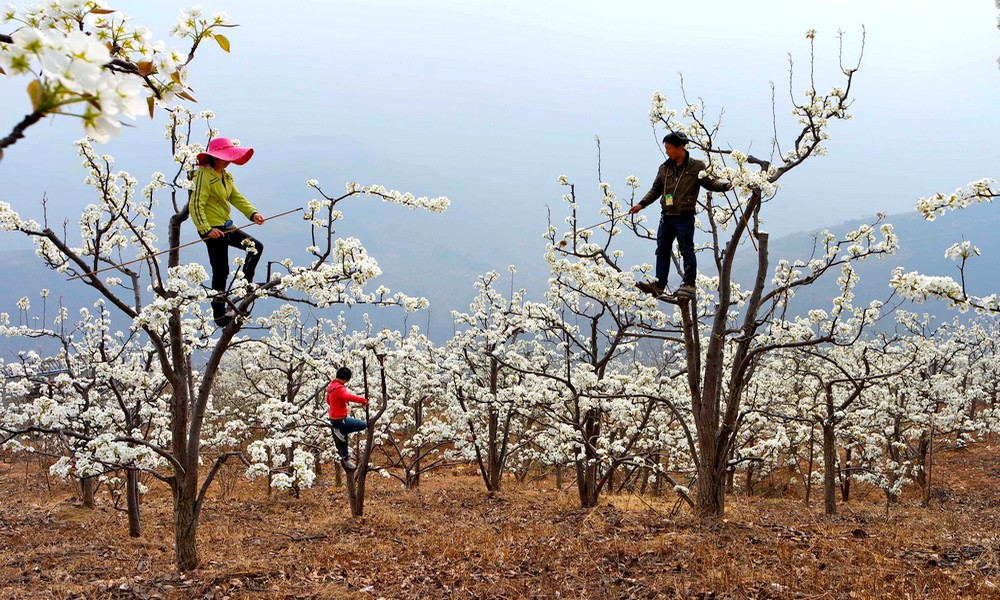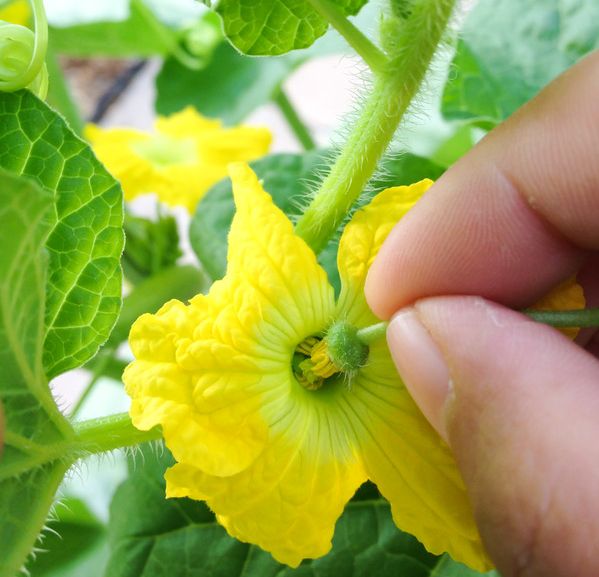By: Ed Erwin
No Bees – No Sex (for Some Plants)
It has been purported that Albert Einstein said: “If the bees disappeared off the surface of the globe, then man would have only four years of life left. No more bees, no more pollination, no more plants, no more animals, no more man.”
Do I believe this to be the case – no. But if that should happen it would be disastrous for the world as we know it.
Plants Need Sex to Reproduce
Sex has always been difficult for plants because they cannot move. Their reproduction takes place by pollination. Pollination accomplishes plant fertilization and the production of fruit, seeds and young plants. One method of pollination is the wind, which blows pollen from plant to plant. However, when pollination relies on the wind, 99.99% of the pollen goes to waste. Most trees, such as pine, rely on the wind for pollination. If you live in an area with pine trees you know how much pollen these trees produce!
The other method of plant pollination is accomplished by pollinators in search of food, such as nectar and pollen. During their visit to the flower, they may brush up against the male part of the flower (stamen) and then deposit pollen to the female part of the same or another flower (stigma). Once the pollen is received by the flower it can produce fruit or seed.
The earth didn’t have flowering plants until approximately 145 million years ago. Plants of the Jurassic period were primarily green forests of tree ferns and conifers, such as pines and cedars. Since pollen is very nutritious, insects were attracted to the plants. During this time, the earth began to warm allowing plants to evolve and produce flowers. The flowers further evolved to produce bright colors, scents and the secretion of sugar-rich nectar, to attract insects. The first flower looked similar to a magnolia tree flower and its first pollinators were probably beetles. Interestingly, this first flower has evolved into over 350,000 species. Pollination by insects is called entomophily.
Research has shown that bees evolved from carnivorous wasps approximately 130 million years ago and pollen feeding, known as pollinivory, allowed bees to rapidly diversify. Bees have become the masters of gathering nectar and pollen. The evolution of both flowers and bees, developed into a symbiotic relationship where two organisms cannot survive without the other. These small creatures provide huge benefits.
Evolution of the Bee
Today there are over 20,000 known species of bees, most of which are ‘solitary’ bees (bees that live alone and not in a hive). The honey bee evolved in Afro-Eurasia approximately 25 million years ago. Today, bees are found on every continent except Antarctica. There are bees in every habitat on the planet where plants or flowers are pollinated. The honey bee accounts for 85% of all the pollination of flowering plants.
Since 2016, bees have been dying off at record rates, known as Colony Collapse Disorder (CCD). This disorder affects honey bee colonies and is characterized by sudden colony death, with a lack of healthy adult bees inside the hive. Although significant research has been focused on solving this issue, the cause is not known. Researchers suspect that multiple factors may be involved including: loss of habitat, decline in biodiversity, pesticides and other agricultural chemicals, climate change, pathogens, pests and parasites all contributing to the single catastrophe. Since 2016, the annual loss of honey bee hives is over 40%.
Fortunately, beekeepers can create colonies by purchasing additional queens from honey bee queen suppliers and splitting one colony into two. In each hive there is one queen, tens of thousands of females (worker bees that can’t lay fertilized eggs and produce new bees) and up to 200 males (or drones) in the Summer. The drones only mate with virgin queens from other hives.
Pollinators and the Environment
As the world’s most important group of pollinators, bees are a crucial part of agricultural production and natural ecosystem functions. Although most consider soil, water and sunlight necessary to produce plants on earth, at least 30% of the world’s crops and 90% of all plants require cross-pollination to spread and thrive, which the bees provided.
In simple terms, pollination allows plants to produce more plants. Without pollinators, plants would slowly reproduce, if at all. Pollination provides genetic diversity resulting in stronger plants. Pollinators are essential to the environment. Without them, we would lose many plants species, ecosystems and the animals that rely on those plants. Plants also provide nutrients to the soil and energy in different ways. When they are consumed by herbivores, they are converted into microorganisms or consumed by carnivores. When the carnivores die they are recycled as energy back into the soil supplying nutrients to the plants.
When pollinators produce an increase in plants, they in turn increase oxygen production and carbon dioxide consumption. This carbon dioxide is converted into carbohydrates, a key resource for honey bees. Without this consumption of carbon dioxide the climate would change and the planet would become inhospitable.
Without plants there is a greater risk of soil erosion leading to carbon being released from the soil. More plants equals less soil exposure and carbon retention. This is known as Carbon Sequestration, defined by the USDA as “the process by which atmospheric carbon dioxide is taken up by trees, grasses and other plants through photosynthesis and stored as carbon in biomass (trunks, branches, foliage and roots) and soils.” With the plants dependent upon honey bees for pollination and plants disappearing, there is a clear connection to the increase of carbon in the atmosphere. According to Lewis Ziska, a plant physiologist at the U.S. Department of Agriculture’s (USDA) Research Service in Maryland, “the increase in CO2 will also reduce the protein content in leaves so insects will need to eat more leaves to get the same amount of protein.”
Bees need pollen to provide the protein they need. However, unlike insects that can consume additional leaves, bees cannot control the quality of pollen and consume more. A poor quality of pollen will lead to a shorter lifespan of the bees and could lead to a collapse of the colony.
Effect of Honey Bee Loss on Food Supply
Let’s take an imaginary trip to a world without honey bees and see what would happen to our global food supply.
Honey Will Disappear
Humans have been harvesting honey for about 9,000 years. In the U.S. there are about 120,000 beekeepers, also known as apiarists. Americans use an average of about 1.5 lbs. of honey per person annually. About 35 percent of this is consumed in homes, restaurants and institutions. The remaining 65 percent is used in the production of baked goods, cereals, beverages and processed foods. Although there are over one hundred thousand beekeepers in the U.S., this honey production only meets about half of the U.S. demand, leading to honey importation. Honey is also used for its medical, dietary and cosmetic properties. Worldwide, honey production is over four billion gallons per year. It takes 12 honey bees working their entire lives to produce one teaspoon of honey, so annual honey production would require approximately 315 trillion bees.
Honey is the only food source produced by an insect that humans eat. Worker honey bees gather floral nectar and transform it into honey by reducing the moisture through a dehydration process. When a foraging bee returns to the hive with nectar, it is passed through approximately 200 bees who process the nectar in their honey corps (small nectar gathering stomach), and in the process they add enzymes to reduce the disaccharides (sucrose) and monosaccharides (fructose and glucose) turning the nectar into honey. This process known as hydrolysis, takes one water molecule to convert each sucrose molecule, demonstrating the bees need of a fresh water source.
China annually produces the largest amount of honey in the world – approximately 24%. Although they are the largest producer of honey, their honey has been banned from the European market by the European Union since 2002. Their honey has been tainted with poisonous agricultural contaminants such as pesticides, antibiotics, heavy metals and adulteration with industrial sugars. The antibiotic China used has been banned in food by the U.S. Food and Drug Administration when it was demonstrated to cause DNA damage in children. In some cases, honey from China was contaminated with lead from improper storage containers.
Chinese honey brokers have been known to create a counterfeit product made of a mix of sugar water, malt sweeteners, corn or rice syrup, jaggery (a type of unrefined sugar), barley malt sweetener or other additives with a bit of actual honey.
Chinese labor costs are approximately $15/person/day making it difficult for U.S. beekeepers to compete. The U.S. has imposed various tariffs to level the playing field. In order to get around the banning and tariffs, Chinese honey is generally labeled “made in Thailand”, the Philippines, Russia, India, and more recently Vietnam and traditional laundering points in Asian countries.
Many Fruits, Vegetables and Nuts will No Longer be Available.
Back to looking at the global food supply. One hundred crops that supply 70% of the world’s food supply, are pollinated by bees. Without bees helping to produce these crops, supermarkets would have tremendous trouble filling the produce section. If you could find fruits and vegetables, they would be very expensive. Everyday items today would turn into luxury items. The next time you go to a grocery store and pass through the fruit and vegetable section, imagine every third item being gone. That’s the magnitude of this loss to our diet and nutrition. Globally, pollination by bees accounts for 235-577 billion dollars in annual food production sales.
The most valuable cash crop fruit grown in the United States, as far as cash crops go, is the orange. Oranges are the most cultivated fruit tree in the world. Christopher Columbus brought the first orange seeds to the New World in 1493. Over 70 million tons, or 224 trillion oranges, are grown annually worldwide. The top orange producing countries by millions of tons are Brazil: 35.6, USA: 15.7, China: 14.4 and India: 10.8.
The second most valuable cash crop fruit grown in the United States is “The Forbidden Fruit,” the apple. The first apple cuttings and seeds were brought to the U.S. from Europe in 1607. Today, there are 2,500 varieties of apples grown in the United States. In the U.S., there are approximately 8,000 apple growers with orchards covering 430,200 acres. Apples require cross-pollination with other varieties. Without bees, the cross-pollination would need to be done by humans. China is the leading producer of apples with over 1.2 billion bushels. The United States produces 240 million bushels a year.
Broccoli, carrots, pumpkins and other squash-type vegetables would become extremely hard to produce without bee pollination. Like many of your favorite fruits, they would just become too rare and expensive to use everyday, so it would be likely that they would disappear completely.
No bees, no… almonds, which are one of the most nutritious and versatile nuts. Also almond milk, almond oil, almond extracts, shampoos and almond bakery goods would no longer be available. Eighty percent of the world’s almonds are produced in California. Approximately 800,000 acres are planted with almond trees in California. In late February and early March, the almond tree begins to produce blossoms that are ready for pollination. Each year approximately 20,000 beekeepers bring in honey bee colonies on semi-trucks loaded with 400 to 500 colonies each, to pollinate the blossoms. This pollination requires more than a million colonies, or 50 billion honey bees.
Depending on the number of bees in the hive, beekeepers charge pollination fees ranging from $165 to $240 per colony.
After the almond bloom is over, the beekeepers move colonies up through the Pacific Northwest pollinating apples and other Spring-blooming crops. By May, the colonies are moved to North Dakota to produce honey and pollinate clover, canola and sunflowers.
Other crops that are ninety percent dependent upon honey bees are avocados, blueberries, blackberries, grapes, raspberries, melons, peaches, cherries and cranberries.
Several varieties of coffee, such as Robusta, are dependent on pollinators. Of the worldwide coffee production, Robusta accounts for around 40% of all coffee production. The presence of bees can improve the quality and size of coffee beans. Without bees, the viability of coffee would be difficult and expensive.
Pollination by Humans, Robots and Drones
Hand Pollination
Without honey bees, pollination would need to be done by humans. One way to pollinate would be by hand. First, understand that the flowering stage to pollinate a plant lasts only about two to three weeks, so the pollination would need to be done quickly. Pollination by hand requires a person to use a brush to ‘paint’ the feminized pollen on the developing buds. In a study done on this process, it was determined that in the U.S., to hand pollinate two acres would cost about seven thousand dollars in labor alone. To pollinate the nations almonds fields it would take tens of thousands of people at cost of over 2.8 billion dollars.
Hand pollination is performed in the Hanyuan county in China, known as the “world’s pear capital.” This hand pollination became necessary after farmers started using more pesticides, causing a complete loss of the bee population.
Robot Pollination
Robotic Pollination is another area being researched. The University of West Virginia has created a moving pollination machine called “The BrambleBee”. It uses state-of-the-art localization and mapping techniques and tools that enable visual perception, path planning, motion control and manipulation. It can only pollinate bramble plants such as raspberries and blackberries in a greenhouse environment. Bramble plants have thorns and produce edible fruit.
The drawback is that it only works on self-pollinating plants. Once it reaches the plant it “jostles the plant” causing the pollen to shake free and hopefully fall on a blossom. The BrambleBee will not work on tree crops, like almonds or non-self-pollinating plants. Based on the limited use of robots, we need to figure out how to protect bees, not replace them.
Drone Pollination
Work has also taken place with utilizing flying drones to pollinate plants. The latest versions cost around $100/unit. Still in its infancy, they must be manually steered. The use of drones will require self-steering and the need to communicate with each other to avoid collisions. Large swarms of drones will be necessary. Drone pollination is still 20 to 30 years away.
Walmart is hedging its bets. Walmart has filed six patents to develop and use pollination drones, aka, robot bees. The drones would be capable of pollinating flowers and crops the same way a bee would. Cameras and sensors on the drone would identify pollen in one flower before moving to the next flower. They want to ensure foods such as apples, pumpkins and almonds remain on shelves in the event of a bee extinction.
Dairy Products Would Begin Disappearing
Dairy cows eat about one hundred pounds of food per day and require a complex diet. They are a major consumer of bee pollinated plants. One of their main food sources is alfalfa, which requires bees for pollination. Without dairy cattle, milk, butter, yogurt, ice cream and cheese will just disappear. Worldwide there are 74 million acres planted in alfalfa. North America produces forty-one percent of worldwide alfalfa on 29 million acres. Although the majority of beef comes from beef cattle, seventeen percent of all beef comes from dairy cows. Humans consume about 75 pounds of beef every year. Sheep and goats also eat pollinated plants.
Clover is another crop important to dairy cattle. Brought to North America as early as 1664 as a forage crop, it is extensively cultivated as fodder plants. Fodder crops are a main source of nutrients for livestock and provides increased production. Livestock fodder crops are also a food source for honey bees and the foliage and seeds are consumed by wildlife. Clover is an important cover crop because it cuts fertilizer costs and enhances soil health, which reduces the need for herbicides and pesticides. Clover also prevents soil erosion, conserves soil moisture and protects water quality.
Cotton will Become an Expensive Luxury
Although cotton crops do not completely rely on bees for pollination, it has been shown that when bees are present during the flowering period it increases the strength, length, quality and quantity of the cotton fiber lint.
Cotton was introduced to Florida in 1556. Today, the USA is the biggest cotton exporter in the world with revenues of $25 billion a year and 200,000 employees. Cotton provides approximately 95% of the world’s natural textile fiber demand. Seventy-five percent of the world’s clothing products contain at least some amount of cotton. Cotton is one of the least expensive textile fibers in the world. Without the bees, cotton crops would be less profitable and would probably lead to only man-made materials being available.
Besides the clothing industry, the loss of cotton would affect the production of our paper money (75% cotton) and toilet paper.
Several cooking oils will also no longer be available: canola, coconut, almond, sesame and cottonseed oil are all pollinated by bees. The word Canola is a contraction of “Canadian” and “ola (oil).” Brand name shortening Crisco will not be available. It’s name is a modification of the phrase “crystallized cottonseed oil”.
What Will We Eat in a Post-bee World?
Anemophily, is the process of pollination transported by air currents from one individual plant to another. Some plants require pollination by an enormous numbers of pollen grains. About 12% of the world’s flowering plants are wind-pollinated.
Without bees, our diet would consist of grains, such as wheat, rice, corn, rye, barley and oats. Several nuts like walnuts, pecans and pistachios would supplement your diet. Your vegetables would be potatoes, tomatoes, onions and carrots since they don’t rely heavily on bees for pollination.
Although beef would be expensive, some meat products will be available, including pork, poultry and fish.
Svalbard Global Seed Vault
There is some hope that most of the non-pollinator plants will not go extinct because of the world’s largest secure seed storage. The facility is part of the international system for conserving plant genetic diversity guided by the United Nations for food security and sustainable agriculture. Located in the Norwegian island of Spitsbergen, in the remote Arctic Svalbard archipelago, it contains 1,081,026 seed samples. Most of these seeds are anemophily, very few are dependent upon pollinators.
The Cost of Food will Skyrocket
Bees are the lifeblood of the food chain. A single bee colony can pollinate 300 million flowers each day. Within three months, worldwide crop yields would plummet. This would cause the Destruction Domino Scenario wherein bees pollinate plants, which then get consumed by animals and these animals are consumed by humans. Herbivores, would be affected first because they depend solely on plant species.
The loss of the plants eaten by animals would cause the cost of feed to increase, resulting in higher food prices. In fact, this has already happened in Scotland. During the Winter of 2012, Scotland lost almost one third of their honey bee colonies, which, in turn caused food prices to soar.
Over the last six years, the bee industry spent $2 billion to replace 10 million hives. The almond industry makes around $500 million a year. Higher fees cost almond growers an extra $83 million a year. They pass those costs on as higher prices.
Malnutrition – Our Diet Would Suffer
By the end of the first year, without honey bees, we would have a very bland diet, less diverse and less nutritious. Malnutrition will be a big worldwide issue. We need different nutritional foods and vitamins to stay healthy and complete our full range of physical and mental activities. Health complications would arise due to malnutrition and medical costs would soar with them.
Loss of Important Vitamins and Minerals
Bee-pollinated crops provide the majority of lipids, which are molecules that contain hydrocarbons and make up the building blocks of the structure and function of living cells. These crops also provide a large portion of the minerals calcium, fluoride, iron and vitamin A, C and E. Without vitamin E, our immune system will become weaker and the lack of vitamin C could cause a scurvy epidemic. Foods that are pollinated by bees also contain nutrients that lower the risk of cancer and heart disease. Without them, we become sickly, tired and weak. The loss of pollinators would place a great number of people into a vitamin A deficiency that is important for many bodily functions, including proper vision, a strong immune system, reproduction and good skin health. Pollination loss would also create a folate deficiency. Folate is a B vitamin that your body needs to work properly and is especially important for healthy pregnancies.
Medication
Many medicines humans use, both conventional and alternative, are derived from flowering plants. The willow and aspen trees used to make aspirin are pollinated by bees. Opium poppies used to produce morphine are also pollinated by bees. The manufacturing of many important drugs and medical treatments could be affected by a sudden loss of our bee population, leading to shortages and in some cases, complete unavailability.
Many vegetables will be substituted increasingly by staple crops like rice, corn and potatoes, eventually resulting in an imbalanced diet.
There Might be a Worldwide Economic Crash
According to Bayer, a German multinational pharmaceutical and biotechnology company that specializes in agriculture seeds, “every season, pollination from honey bees, native bees and flies deliver billions of dollars (U.S.) in economic value. Between $235 and $577 billion (U.S.) worth of annual global food production relies on their contribution.” With such an impact on the economy, it begs the question: if these critical insects were public companies, how might they stack up in the global marketplace?
Without bees the world is going to take an enormous economic hit. There are going to be entire industries like coffee, cotton and food production that may no longer exist.
To understand the overall impact you need to look at the ‘Crop Value Chain’ (see image below). This chain of crop activities include: land preparation, planting, cultivation, harvest, storage, marketing process, market and consumer. Each step involves countless people, which has an impact on our economy.
Alfalfa is a $10 billion per year industry. Coffee is a $81 billion per year industry in the world. The value of crops pollinated by honey bees is valued at $54.75 billion dollars. In the U.S., there are 2.05 million farms, of which 97% are family owned. Many of these farms will no longer exist.
Worldwide Famine
Without bees, most plants can’t grow or reproduce. Large-scale desertification, which is the process by which natural or human causes reduce the biological productivity of drylands (arid and semiarid lands), could occur. Huge landslides could wipe out entire villages, and severe drought could starve the survivors. Freshwater would start to disappear, since trees are needed for water retention, and there would be a lot less trees. Studies have shown the devastating impact the continued loss of pollinators like honey bees could have on millions of people in the developing world. Seventy percent of the world’s poorest people live in rural areas and depend on agriculture for their livelihood.
Bees are among the hardest working creatures on the planet providing an important ecosystem service of ensuring pollination and the reproduction of many cultivated and wild plants, crucial for food production, human livelihoods and biodiversity.
A world without bees could struggle to sustain the global human population of 7.7 billion people.
Famine would be very likely in developing countries. Humankind will survive because food crops like wheat, rice, soy and corn grow without insect help. It would however take time to switch over to these crops. Without bees it would be hard to maintain our current population, which is still growing.
Food availability will drop drastically and costs will increase, which would result in less access to food for many people.
If all bees died, it may not be a total extinction event for humans, but it would be a disaster for our planet.
It’s almost impossible to overstate how important the role bees play in the global food supply and natural balance of the planet. It’s important not just for us that bees survive, but for every living thing on the planet.
Ed Erwin
Beeharmony.org
Beeharmonyorg@gmail.com
Executive Director of Bee Harmony
Certified Master Beekeeper –
University of Montana
Director of the Mentee/Mentor
Program of the Montgomery County Beekeepers Association







